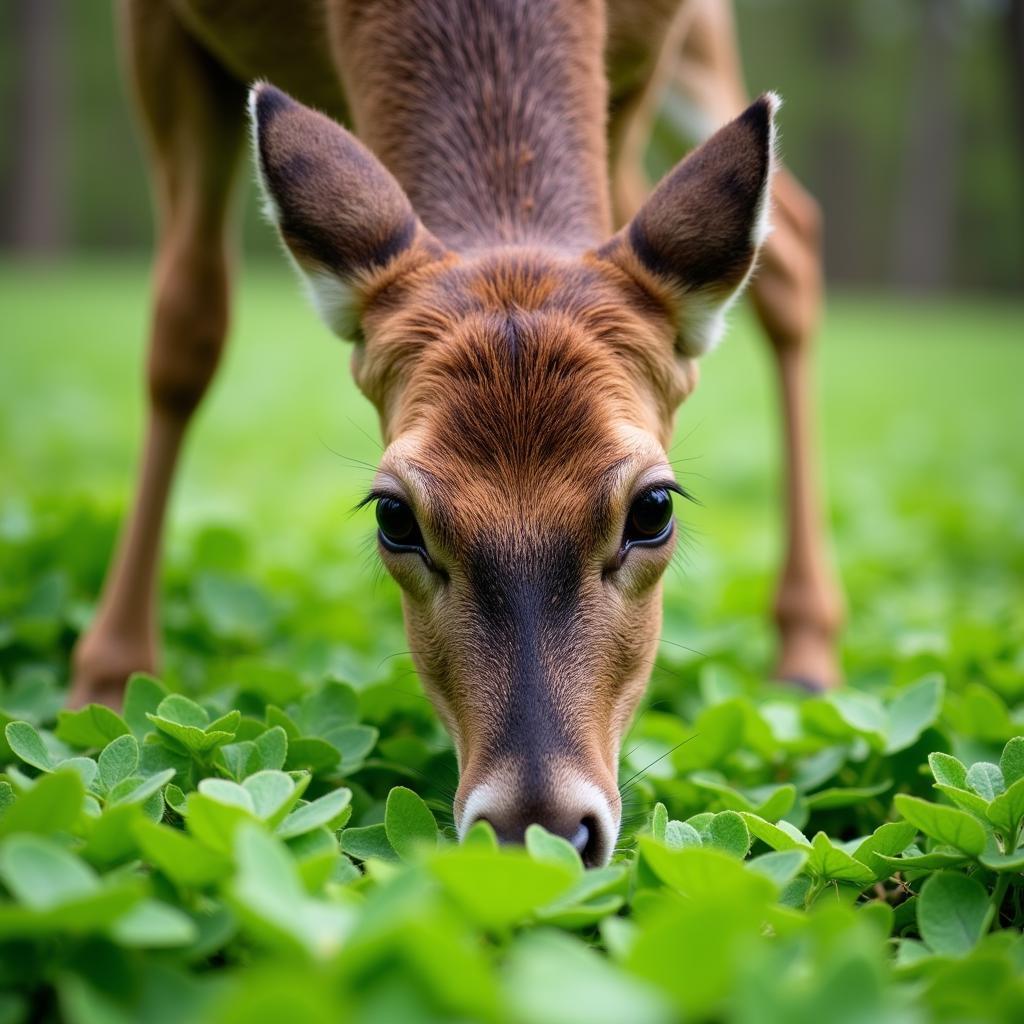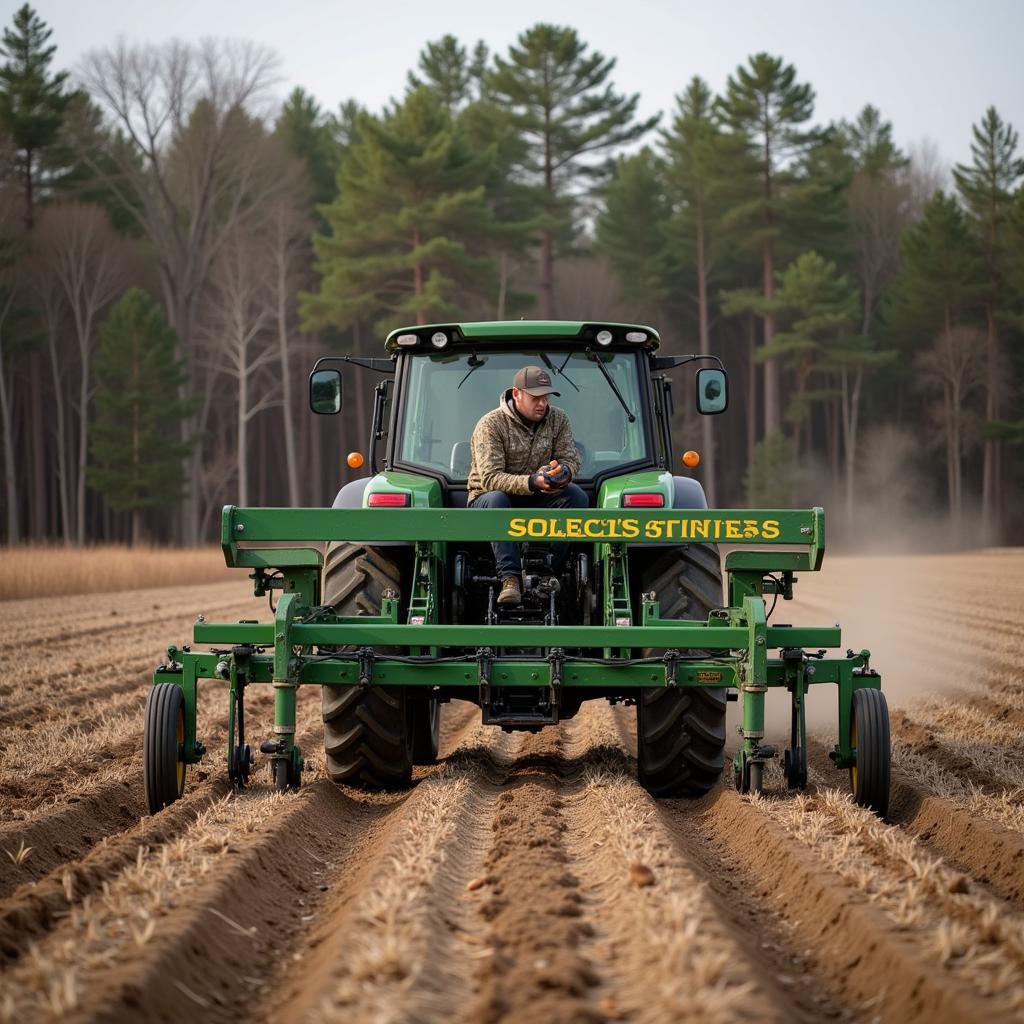Food Plot Design For Deer is a crucial aspect of successful deer management and hunting. Understanding how to effectively plan, plant, and maintain your food plots can significantly impact the health of your deer herd and improve your hunting opportunities. From selecting the right location to choosing the best seed for food plot and using the best no till drill for food plots, every step plays a vital role in attracting and sustaining a thriving deer population.
Creating a thriving food plot isn’t just about throwing seed on the ground; it’s a strategic process that requires careful consideration of various factors. These include the local deer population’s needs, available resources, and the surrounding environment. One important aspect is choosing the proper seed for food plot. A well-designed food plot provides essential nutrients that supplement a deer’s natural diet, especially during critical periods like the winter months or antler growing season. Furthermore, strategic food plot placement can influence deer movement patterns, making them more predictable and accessible for hunters.
Understanding Deer Nutritional Needs
Deer require a balanced diet just like any other animal. Knowing what nutrients they need and when they need them is paramount to successful food plot design for deer. Protein, carbohydrates, and fats are essential, with their importance varying depending on the time of year. For example, during antler growth, protein-rich plants like clover and chicory food plots are highly beneficial.
Protein Powerhouses for Antler Growth
Protein is a building block for antler development, so providing access to high-protein forage is essential during spring and summer. Consider planting legumes like clover, alfalfa, and soybeans in your food plots.
Carbohydrates for Energy
Carbohydrates are essential for energy, especially during the rut and winter. Corn, oats, and brassicas are good sources of carbohydrates and can help deer maintain their body condition during stressful periods.
 Deer Feeding on Clover Food Plot
Deer Feeding on Clover Food Plot
Strategic Placement of Your Food Plots
The location of your food plots is just as important as what you plant in them. Consider factors like sunlight, water availability, and proximity to bedding areas when planning your food plot design for deer. Ideally, your plots should be easily accessible to deer but not overly exposed to predators or human disturbance. Consider establishing a woods food plot to provide a secluded and safe feeding area.
Utilizing Natural Terrain
Take advantage of natural terrain features, such as valleys and slopes, to maximize sunlight exposure and drainage. This can greatly impact the success of your food plots.
Creating Edge Habitat
Creating edges where different habitat types meet, such as woods and fields, can attract deer. These transition zones offer a variety of food sources and cover.
Choosing the Right Seeds and Equipment
Selecting the right seeds is critical for food plot success. Consider the soil type, climate, and the specific nutritional needs of the deer in your area. Using the best no till drill for food plots can ensure proper seed placement and improve germination rates. Additionally, consider using food plot screen seed to create visual barriers and protect your plots from unwanted attention.
Matching Seeds to Soil
Different seeds thrive in different soil types. Conduct a soil test to determine the pH and nutrient levels of your soil and choose seeds that are well-suited to those conditions.
 Hunter Planting a Food Plot with a No-Till Drill
Hunter Planting a Food Plot with a No-Till Drill
Timing is Everything
Planting at the right time is crucial. Follow recommended planting dates for your chosen seed varieties to ensure optimal germination and growth.
“A well-planned food plot is like a magnet for deer,” says wildlife biologist Dr. Sarah Miller. “By understanding their nutritional needs and providing a diverse range of forage, you can attract and hold deer on your property.”
Maintaining Your Food Plots
Once established, your food plots require ongoing maintenance to ensure their long-term success. This includes fertilization, weed control, and periodic soil testing.
Weed Control Strategies
Weeds can compete with your food plot plants for resources. Implement effective weed control strategies, such as herbicides or mechanical removal, to keep weeds at bay.
Soil Testing and Fertilization
Regular soil testing helps you monitor nutrient levels and adjust your fertilization strategy accordingly. This ensures that your food plots continue to provide the nutrients deer need.
Conclusion
Food plot design for deer is a complex but rewarding endeavor. By carefully considering factors like location, seed selection, and ongoing maintenance, you can create thriving food plots that benefit your deer herd and enhance your hunting experience. Remember, successful food plot management requires a long-term commitment and a willingness to adapt your strategies based on the specific needs of your property and the deer that inhabit it. “Don’t be afraid to experiment with different seed mixtures and planting techniques,” advises seasoned hunter John Thompson. “Every property is unique, and what works for one hunter might not work for another.”
FAQ
- What is the best time of year to plant food plots for deer?
- What are the most important nutrients for deer?
- How large should a food plot be?
- How can I control weeds in my food plots?
- What type of equipment do I need for planting food plots?
- What are some good food plot seed mixtures for attracting deer?
- How often should I fertilize my food plots?
For assistance with your food plot design or any related inquiries, please contact us at Phone Number: 02437655121, Email: [email protected] Or visit us at: 3PGH+8R9, ĐT70A, thôn Trung, Bắc Từ Liêm, Hà Nội, Việt Nam. We have a 24/7 customer service team.